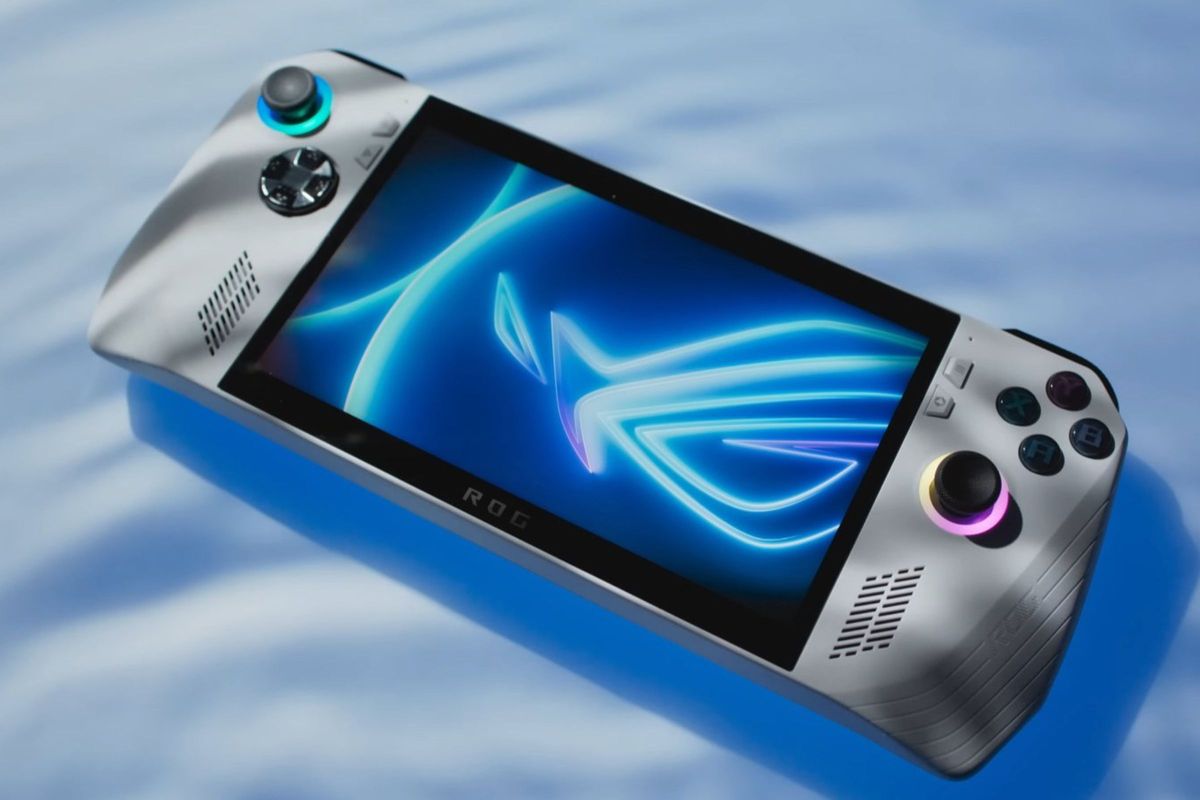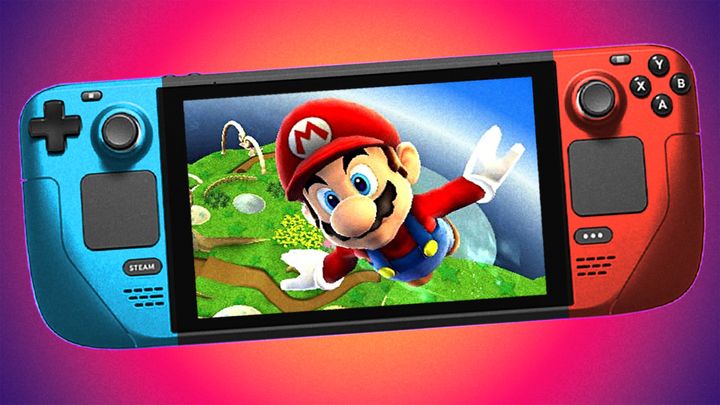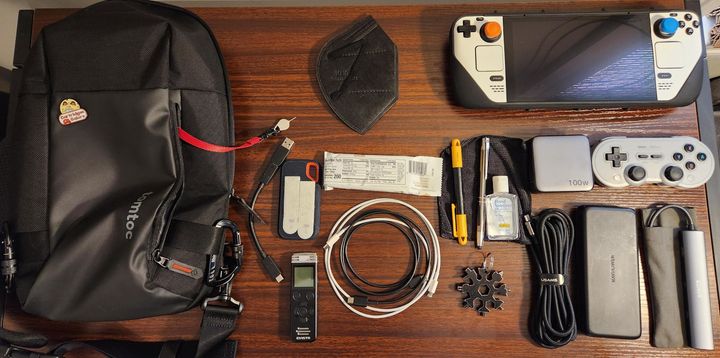You can't trust any handheld PCs to compete with the Steam Deck. ASUS's ROG Ally will lose.
Assuming it's not an April Fool's Day prank, the ASUS ROG Ally is yet another doomed Steam Deck wanna-be.

So, Saturday was April 1st. Here in the US, that also means it’s the worst holiday ever: April Fools Day.
Don’t get me wrong. Sometimes it’s fun to participate in the national day of pranking… I’ve done it before here on the channel. But I won’t go out of my way to pull one over on you guys and, when I do it, I try to ensure it’s clear I’m joking.
But then you have Asus who announced the ROG Ally. On April Fools Day.
There’s no clear indication that this was a prank. In fact, the design of the Ally is too good for a mere prank, in my opinion. But then, the tone of the video feels tongue-in-cheek-enough to fit the First of April vibe.
However, the fact that there’s an actual BestBuy,com page for this device leads me to believe that this is a real product that will actually be released at some point. So either this is some real high-end shipposting or ROG is releasing the Ally.
So let’s, for the sake of the argument, assume this video is announcing a real product and is not a prank.
The tech media, in its infinite wisdom, is jockying the Ally as some kind of Steam Deck competitor. But is that the reality of the situation?
Let’s talk about this device, go through this video, and figure out how it will compare to the Steam Deck and the handheld PCs it will actually compete with.
So, the video starts off talking about how ROG has “pushed the boundaries” of gaming with the laptops, tablets, controllers, and even contact lenses. But then it says “The ROG Ally, ROG’s first handheld console. This time, we’re finally bringing true PC performance to your life on the go. The ROG Ally is a Windows gaming handheld…”
Wait. Which is it? Is it a handheld console or is it a Windows gaming handheld? It categorically cannot be both. The two terms are mutually exclusive. Windows is a general purpose desktop operating system. Therefore, any device running Windows is NOT a console. In fact, any device running Windows CANNOT be a console. At a minimum, consoles must run gaming-focused operating systems (or no operating system at all). Consoles must also have a custom, controller-driven user interface that can launch games and manage the system. And, finally–this is critical–modern consoles must have a first party storefront that subsidizes the cost of the hardware.
I will die on this hill.
I’d also argue that, in the handheld form-factor, we should universally expect a console experience for a “gaming handheld.” Which Windows is simply incapable of providing, due to its encumbrances as a general purpose OS.
Apparently, ROG Ally has a custom AMD APU that supports eGPUs. That’s a pretty neat trick and it’s one of the few things I wish the Steam Deck hardware actually did. It also–apparently–supports 1080p gaming with the mention of “gorgeous and smooth full HD”
Which, hey, if all you care about is having a bigger number on your spec sheet, congratulations. I’ll stick to 800p and get better performance and battery life. But that’s just me.
So look, ROG is trying to position this thing as a Steam Deck competitor. But I’ve got news for you. Unless this thing ships with better specs, a gaming OS, and a sub-$600 price point? It’s not a competitor. The reason is simple: You cannot trust Windows-powered handheld devices.
Windows is worse for gaming
The numbers are in: even if developers don’t do anything to support the Steam Deck, games perform better on SteamOS than they do on Windows.
Elden Ring is a prime example: running the game on Windows results in worse performance than on Linux. And Valve brought Steam Deck support within a day of release and had it working better than it did on Windows–even on significantly more powerful hardware.
But if a game targets Vulkan instead of DirectX? Things get even better. Doom Eternal on the Steam Deck has shockingly high framerates, especially for the hardware. And with all other things being equal, playing the game on Windows is a much worse experience.
And this has held true for many other games. SteamOS and Valve have delivered something special: a PC OS that is actually optimized for games.
Furthermore, Windows has exorbitant background processes which eat up your system resources, Windows is less optimized for battery life, and it arbitrarily consumes the limited write cycles of your NVMe–killing its lifespan in the process.
Finally, despite what the stereotypical PC gamer’s maximalist intuition might dictate, having 100% library compatibility isn’t what is most important when it comes to these devices.
Having a better user experience that ditches the mouse and keyboard, having a UI that integrates with the hardware, and, frankly, having the Steam Deck’s indispensable performance menu a button press away. That’s what’s important on a device of this form factor. (At least, in my opinion)
Windows can never offer any of these things unless it came directly from Microsoft. And that’s unlikely.
FOMO & Obsolescence
Next, let’s talk about the lifespan of your new Windows-powered hardware.
It will be quote-unquote “obsolete” next year. This is because the manufacturer only makes money off the sale of the hardware itself and, if they want to continue making money, they need to introduce a new hardware revision within 12-18 months.
So a year from now they can’t just release a modest upgrade to the RAM and storage, either. No. They need to roll out a whole new SKU with appealing bumps to all the specifications across the board in order to satisfy the idiotic and unsustainable expectations of the “bigger number better” crowd.
So let’s say you pay $1,400 today (or whatever the price will be) and you can play the latest AAA games for about a year. But three years from now, your investment into the ROG Ally could be two generations out of date. Due to this, the Ally won’t have the install base for developers to justify supporting it specifically. So it will be useful for what? 2D indies and older PC games. That’s it.
Meanwhile, the Steam Deck will be a stable target for game developers to support for years to come. This allows the software support for Deck to mature and gives developers time to optimize later releases for the hardware. It will have a much wider install base, giving devs incentive to do so. And it will be safe to purchase a Deck three years from now and know that it will still be getting new game releases for a year or more. Plus, Valve doesn’t feel the pressure to release new hardware every year because they make money from game sales.
They’re not competitors to the Steam Deck
Look, it doesn’t matter if it’s the ROG Ally, the AYANEO devices, the GPD Win devices… whatever. These handhelds are not competitors to the Deck. And they never could be.
These PC handhelds are replaced every year by new models, they’re sold at a markup (often two and a half to three times the price of the Deck’s entry level SKU) and they only offer modest spec boosts over the Deck.
Like it or not, and despite what Valve themselves say, the Steam Deck is more of a console than it is a PC. Its cost is subsidized with game sales, its hardware lifespan will be four to five times longer than the would-be competitors, and the Deck runs a custom, gaming-focused Operating System complete with a beautiful, controller-oriented UI.
The fact is: because of economic and production factors and given the nature of the tech industry, you simply can’t trust a handheld device that ships with Windows. Not just because Windows spies on you, but because the manufacturer doesn’t control the software stack and is financially obligated to move on to the next generation as quickly as possible… which will make the system you just bought obsolete in a handful of months.
But that’s just my take. I’d love to hear yours. Leave me your thoughts in the comments below!




Comments ()